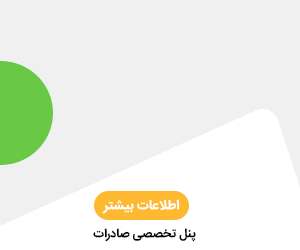Iranian Saffron Exports: Quality, Applications, and Regulations
Iranian saffron exports are renowned globally for their exceptional quality, vibrant color, and unique flavor. Iran is the largest producer and exporter of saffron, often referred to as “red gold” due to its value and versatility. This article explores the quality and uses of Iranian saffron, along with the regulatory framework governing Iranian saffron exports.
Quality of Iranian Saffron
Iranian saffron is considered the highest quality in the world, largely due to the country’s ideal growing conditions and traditional harvesting methods. The quality of saffron is determined by its color (crocetin), aroma (safranal), and taste (picrocrocin), all of which are influenced by the climate and soil of Iran’s saffron-producing regions, particularly in Khorasan province.
Key factors contributing to the superior quality of Iranian saffron exports include:
- Hand-Picking: Saffron threads are carefully hand-picked to ensure that only the best stigmas are collected. This meticulous process preserves the potency and purity of the saffron.
- Drying Methods: Traditional drying techniques are used to retain the vibrant color and potent aroma of the saffron, distinguishing it from lower-quality varieties produced elsewhere.
- Organic Farming: Many Iranian farmers use organic farming practices, avoiding synthetic chemicals to ensure that the saffron is free from contaminants.
Applications of Iranian Saffron
Iranian saffron is used in various industries, making it a highly versatile product. The primary applications of Iranian saffron exports include:
- Culinary Uses: Saffron is a key ingredient in many dishes, from Persian and Indian cuisine to European and Middle Eastern specialties. Its distinct flavor and color make it a favorite in high-end gastronomy.
- Medicinal Uses: Saffron has been used in traditional medicine for centuries due to its potential health benefits, including anti-inflammatory and antioxidant properties.
- Cosmetic Uses: The cosmetic industry utilizes saffron for its skin-brightening properties and as an ingredient in luxury skincare products.
- Textile Industry: Saffron is also used as a natural dye in the textile industry, particularly for dyeing high-quality fabrics.
Regulations and Conditions for Saffron Export
Iranian saffron exports are governed by strict regulations to maintain the high standards associated with the product. Key aspects of the regulatory framework include:
- Quality Control: Saffron exports must pass rigorous quality control checks to ensure they meet international standards. This includes testing for purity, color, and flavor intensity.
- Certification: Exporters must obtain relevant certifications, such as ISO 3632, which classifies saffron based on its quality. Certified saffron is highly valued in international markets.
- Packaging: Proper packaging is crucial for maintaining the quality of saffron during transit. Exporters use airtight, light-resistant packaging to protect the saffron from environmental factors that could degrade its quality.
- Export Permits: To comply with Iranian export laws, saffron exporters must secure the necessary permits and adhere to international trade agreements.
Buying Iranian Saffron
For those looking to buy Iranian saffron, it’s essential to choose suppliers who adhere to these stringent regulations to ensure the highest quality product. Buying Iranian saffron directly from certified suppliers not only guarantees authenticity but also supports the traditional farming communities in Iran.
Conclusion
Iranian saffron exports are a testament to the country’s rich agricultural heritage and commitment to quality. Whether used in culinary applications, medicine, or cosmetics, Iranian saffron stands out for its unparalleled quality and versatility. The strict regulations governing the export of saffron from Iran ensure that only the finest saffron reaches international markets, making buying Iranian saffron a wise choice for those seeking the best in the world.






پاسخ بگذارید